Innovative New Eco-Friendly Products Making it Easier to Go Green
In the second story of this two-part series we take a deep dive into what's new and exciting in the sustainability space
Green is the go when it comes to home design, say the experts, and there’s no shortage of exciting new eco-friendly products and materials to choose from. Planning to take an earth-friendly approach to your upcoming renovation or redesign? In the second story of this two-part series we look at what design experts are loving right now, as well as some impressive eco-friendly products that have caught our eye recently.
You can read part one of this story here.
You can read part one of this story here.
Cork flooring
As a material, classic cork flooring scores top points for warmth and sustainability, and it’s a firm favourite with the team at Breathe Architecture. “Cork is a totally renewable source – cork products are made from the bark of a cork tree, so the tree is never cut down to produce the material. The material can be finished and replenished like solid timber flooring, so it has wonderful longevity,” says Robinson.
Keen to build green? Find an architect specialising in eco-friendly design on Houzz
As a material, classic cork flooring scores top points for warmth and sustainability, and it’s a firm favourite with the team at Breathe Architecture. “Cork is a totally renewable source – cork products are made from the bark of a cork tree, so the tree is never cut down to produce the material. The material can be finished and replenished like solid timber flooring, so it has wonderful longevity,” says Robinson.
Keen to build green? Find an architect specialising in eco-friendly design on Houzz
An eco alternative to traditional brick and concrete
Structural insulated panels (SIPs), which are prefabricated, highly insulated building panels, are an increasingly popular choice with environmentally conscious home builders – particularly for those in cold climates, says Mike Hermon, executive director for planning and development at Housing Industry Association (HIA).
“They fit together in a modular style, which means fewer offcuts and wastage. Also, the way they are produced gives them good air tightness and insulation qualities. They are comparably light and easy to transport due to their generally regular shape and size, and they are easy to erect on-site, making them time- and cost- effective,” he says.
Structural insulated panels (SIPs), which are prefabricated, highly insulated building panels, are an increasingly popular choice with environmentally conscious home builders – particularly for those in cold climates, says Mike Hermon, executive director for planning and development at Housing Industry Association (HIA).
“They fit together in a modular style, which means fewer offcuts and wastage. Also, the way they are produced gives them good air tightness and insulation qualities. They are comparably light and easy to transport due to their generally regular shape and size, and they are easy to erect on-site, making them time- and cost- effective,” he says.
Carpet Court Econyl® Regenerated Nylon carpet.
A softer touch
Nylon carpet has long been prized by those looking for durability and colour fastness in a flooring material. Now you can choose one with eco cred too. Carpet Court has recently launched Econyl® Regenerated Nylon carpet: eight carpet ranges made from 100-percent recycled yarn derived from nylon waste, including fishing nets, scraps and old carpets destined for landfill (available in Australia).
A softer touch
Nylon carpet has long been prized by those looking for durability and colour fastness in a flooring material. Now you can choose one with eco cred too. Carpet Court has recently launched Econyl® Regenerated Nylon carpet: eight carpet ranges made from 100-percent recycled yarn derived from nylon waste, including fishing nets, scraps and old carpets destined for landfill (available in Australia).
Carpet Court Econyl® Regenerated Nylon carpet.
“Until recently, choosing eco-friendly products for the home has been no mean feat and often at the expense of quality and style,” says Carpet Court ambassador, Darren Palmer.
“Conscious consumerism is becoming a way of life, driving designers and manufacturers to respond by creating beautiful, innovative and cost-effective products that don’t use additional resources in the creative process.”
Browse more images of stunning bedrooms on Houzz
“Until recently, choosing eco-friendly products for the home has been no mean feat and often at the expense of quality and style,” says Carpet Court ambassador, Darren Palmer.
“Conscious consumerism is becoming a way of life, driving designers and manufacturers to respond by creating beautiful, innovative and cost-effective products that don’t use additional resources in the creative process.”
Browse more images of stunning bedrooms on Houzz
Nylex recycled water hose and jet spray gun.
Love your lawn
It’s now also possible to care for your garden and the environment with the range from Nylex, which can be used to water plants with recycled and grey water. The collection includes a Recycled Water Knockabout Hose with anti-leak hose connectors and stop valves that allow you to change accessories, such as switching from spray gun to sprinkler, without wasting water (and it comes in lilac so you can easily identify that the water in use is not safe to drink). You can also find a Recycled Water Circular Sprinkler in the range and a Recycled Water Two-Hour Mechanical Tap Timer, which automatically turns off the tap when the timer goes off.
Love your lawn
It’s now also possible to care for your garden and the environment with the range from Nylex, which can be used to water plants with recycled and grey water. The collection includes a Recycled Water Knockabout Hose with anti-leak hose connectors and stop valves that allow you to change accessories, such as switching from spray gun to sprinkler, without wasting water (and it comes in lilac so you can easily identify that the water in use is not safe to drink). You can also find a Recycled Water Circular Sprinkler in the range and a Recycled Water Two-Hour Mechanical Tap Timer, which automatically turns off the tap when the timer goes off.
An Ecokit home.
Build better
Ecokit is an innovative Australian construction company (selling internationally), which makes high-performance homes built from non-toxic materials that come with low running costs. They’re compact, comfortable, fully insulated and can be built by homeowners in just a couple of weeks.
“I founded the company as I was looking to create a healthy and sustainable tiny house for myself. Overwhelming interest online encouraged me to develop the system further and launch commercially. Today my team includes architects and engineers,” says Camilla Novotna, managing director at ecokit.
“We only use plywood and LVL [laminated veneer lumber] made from FSC-certified timber as well as non-toxic glues. During manufacture we optimise each sheet and our waste is minimised and at a very low level. Our buildings achieve a minimum 8.2-star energy rating and whenever we specify materials and finishes, these are low-VOC and have been carefully analysed for their environmental impact,” she says.
Build better
Ecokit is an innovative Australian construction company (selling internationally), which makes high-performance homes built from non-toxic materials that come with low running costs. They’re compact, comfortable, fully insulated and can be built by homeowners in just a couple of weeks.
“I founded the company as I was looking to create a healthy and sustainable tiny house for myself. Overwhelming interest online encouraged me to develop the system further and launch commercially. Today my team includes architects and engineers,” says Camilla Novotna, managing director at ecokit.
“We only use plywood and LVL [laminated veneer lumber] made from FSC-certified timber as well as non-toxic glues. During manufacture we optimise each sheet and our waste is minimised and at a very low level. Our buildings achieve a minimum 8.2-star energy rating and whenever we specify materials and finishes, these are low-VOC and have been carefully analysed for their environmental impact,” she says.
Inside an Ecokit home.
You’ll find building designs ranging from one-bedroom backyard studios to three-bedroom family homes.
“The system was created with self-assembly in mind for owner-builders. No machinery is required and a team of four friends can build the structure to lock-up stage in 10-12 days,” she says. “When a builder is assigned by the client to undertake the construction, we collaborate with him or her from the design phase to optimise the project and its budget.
“An Ecokit home costs the same as any other high-quality home, however the cost is distributed differently as we put more value into the materials and there is less spend on labour costs,” she says.
You’ll find building designs ranging from one-bedroom backyard studios to three-bedroom family homes.
“The system was created with self-assembly in mind for owner-builders. No machinery is required and a team of four friends can build the structure to lock-up stage in 10-12 days,” she says. “When a builder is assigned by the client to undertake the construction, we collaborate with him or her from the design phase to optimise the project and its budget.
“An Ecokit home costs the same as any other high-quality home, however the cost is distributed differently as we put more value into the materials and there is less spend on labour costs,” she says.
Artwork from BEND.
A natural outlook
Artwork providers are getting in on the eco act too. BEND is a company founded by photographer Shane Cartlidge, where you’ll find stunning prints and reusable calendars, all made using sustainable methods. Prints are made on 100-percent cotton rag (considered the most eco-friendly photographic paper as it uses no tree fibres), and frames are made from locally sourced, FSC-certified Victorian ash.
You’ll also find clever reusable calendars, which are produced using FSC-certified, archival-quality paper. These have a perforation around each image so you can tear away the date section once the month is over and reuse the photographic image as a print to decorate your wall.
Your turn
Are you planning to go green with your upcoming renovation or redesign? Tell us in the Comments below, like this story, save the images, and join the conversation.
More
Looking for more on eco-friendly homes? Check out this story: Eco Design Principles From the Ground Up
A natural outlook
Artwork providers are getting in on the eco act too. BEND is a company founded by photographer Shane Cartlidge, where you’ll find stunning prints and reusable calendars, all made using sustainable methods. Prints are made on 100-percent cotton rag (considered the most eco-friendly photographic paper as it uses no tree fibres), and frames are made from locally sourced, FSC-certified Victorian ash.
You’ll also find clever reusable calendars, which are produced using FSC-certified, archival-quality paper. These have a perforation around each image so you can tear away the date section once the month is over and reuse the photographic image as a print to decorate your wall.
Your turn
Are you planning to go green with your upcoming renovation or redesign? Tell us in the Comments below, like this story, save the images, and join the conversation.
More
Looking for more on eco-friendly homes? Check out this story: Eco Design Principles From the Ground Up




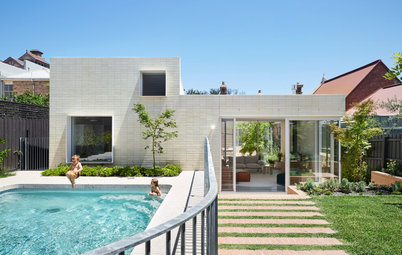
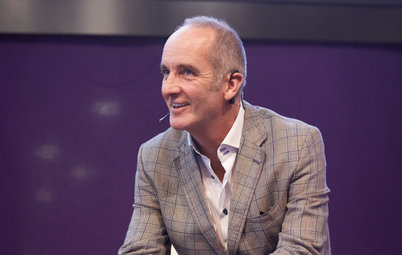
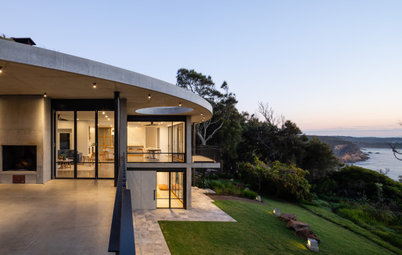
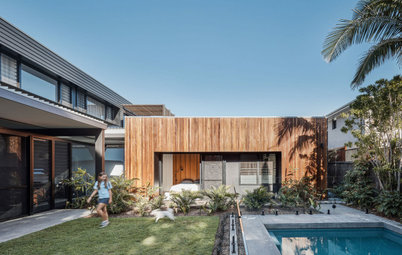
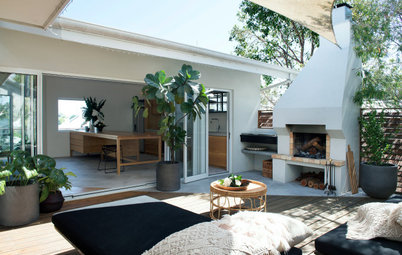
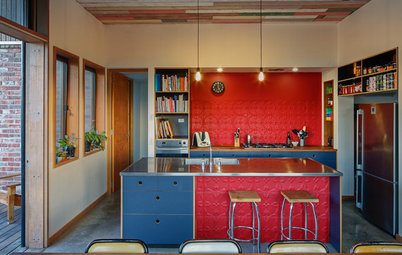
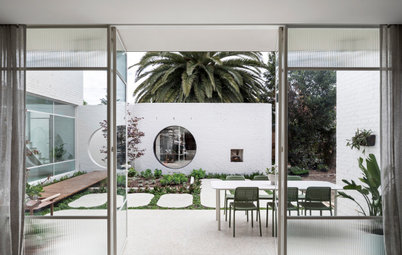

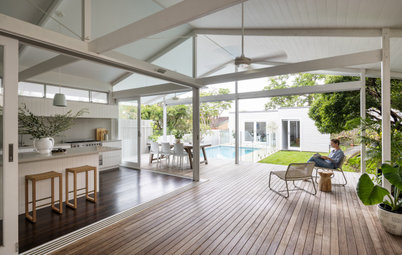
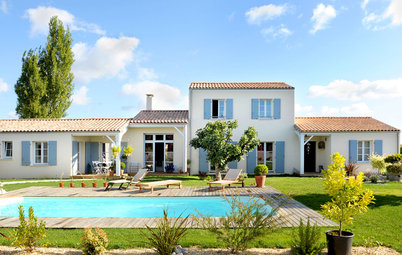
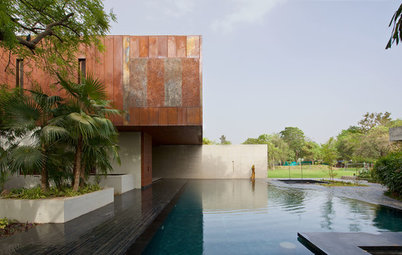
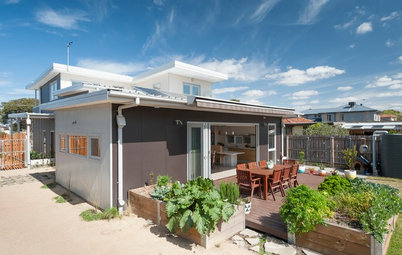
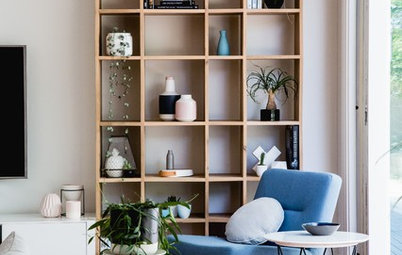
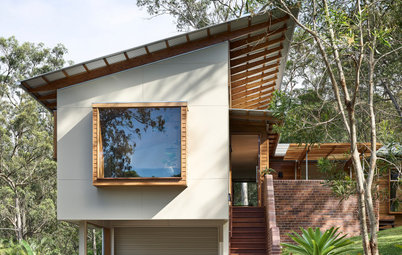
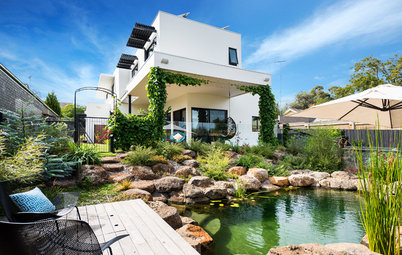
Sustainable architecture firm Breathe Architecture is increasingly using raw, unlaminated MDF (medium density fibreboard) joinery in its projects, says Bettina Robinson, associate architect and head of interiors at Breathe Architecture.
“We have recently been designing with raw E0 MDF board with simply a low-VOC (volatile organic compounds) clear coat finish (so no applied laminate, colour two-pack polyurethane or veneer finish) and we think it looks great,” she says.